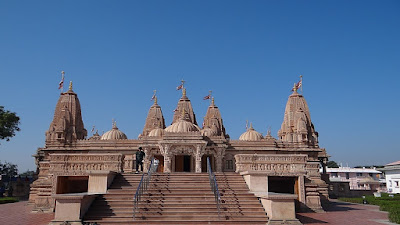 |
| Swami Narayan Temple, Silvassa |
Quick Facts
Established: 11 August 1961
Total Area: 491 Km²
Population: 342853
Density: 700/Km²
Official Languages: Hindi, Gujarati
History
Till 1954, Dadra and Nagar Haveli was a Portuguese colony along with Goa, and Daman and Diu.
Prior to Portuguese rule, the region was ruled by Marathas for more than 150 years.
The region was occupied by Portugal in 1789 and liberated by Indian supported groups like United Goa Front (UGF), National Movement Liberation Organization (NLMO), Rashtriya Sevak Sangh (RSS), and Azad Gomantak Dal in 1954.
The Republic of India officially merged Dadra and Nagar Haveli as one of its union territories in 1961.
From 1954 to 1961, K. G. Badlani, an IAS officer, administered the region. In 1961, Badlani was made Prime Minister for a day, so that Head of State could sign the treaty of merger with Prime Minister of India. Though, Portugal deemed this act as illegal.
On 31 December 1974, Portugal recognized Dadra and Nagar Haveli as part of India, along with Goa, and Daman and Diu.
Geography and Economy
Agriculture, Animal Husbandry, Forestry and Tourism are major economic drivers of the region.
Main agricultural products are paddy, ragi, small millets, jowar, sugarcanes, tur, nagli, val, chikoo and litchi.
Dadra and Nagar Haveli has fair literacy rate at 77.6%.
Sex ratio of the region is the second worst among all federal units of India, counting at 775 females per 1000 males.
Some of the major tribal groups are Warli, Dhodia, Kokna and Kathodia.
Some of the major festivals are Diwaso, Barash, Bhawada, and Kali Puja.
